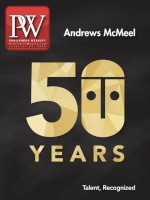“Look who’s leading the fight to save our planet: a young person,” says naturalist Sy Montgomery, author of nearly 30 books for children and adults, including the forthcoming Condor Comeback (HMH, July; ages 10–12). We spoke with Montgomery and April Pulley Sayre, the author and photographer behind Being Frog (S&S/Beach Lane, out now; ages 3–8) and more than 70 other kids’ books on nature, about kindling readers’ early love and respect for Earth’s creatures.
What drew you to your latest subjects, and how did you conduct your in-the-field research?
S.M.: I was in Santa Barbara on a book tour for The Soul of an Octopus. The director of the zoo, Rich Block, said, “As long as you’re in town, let me introduce you to Estelle Sandhaus, who’s directing condor conservation here.” Estelle took me to one of the places where the wild condors are captured twice a year, for health checks and radio telemetry. In a large outdoor flight pen, I could see a quarter of the Southern population of that endangered species all in one place. The birds’ personalities are so distinct. Some are shy and some are bold, affectionate, or crabby.
It was a good news story: California condors were extinct in the wild. Today there are over 450, all because people decided to intervene and undo the harm that they’d done. And the work’s not finished. I thought, what a great book for kids. We need the public’s cooperation to continually work on the problem, and we need young people to be enlisted in the effort.
A.P.S.: Green frogs are near to where I live in Michigan, and I came to love these local frogs. My husband and I have learned about them over the last two decades and participated in surveys of Great Lakes frogs. We check the populations by going out and listening for the different types and writing down estimates of how many we hear. We learned by watching them day-to-day, noticing the individual differences. It’s one thing to know about their behavior from books, but it’s different when you see it and photograph it up close.
How do you go about presenting scientific subjects for young readers?
S.M.: I approach writing for children pretty much the same way I do for adults. Young readers are just as smart—they just haven’t been alive as long. They may even be better observers than you. Kids aren’t just the leaders of tomorrow; they’re also the leaders of today.
A.P.S.: Science is full of imagination and creativity. It’s a process for pursuing ideas and questions. My goal is for readers to feel connected to a subject or to the world in general, because that’s the feeling I get as I settle myself deeper and deeper into a topic.
What do you hope readers will get out of your books?
S.M.: I’m seeing the issue of global climate disruption and I’m scared we’re getting distracted by other things. It’s like we’re picking a fistfight on the deck of the Titanic. You can’t let the end of the world be eclipsed by fears about the end of the week. Look who’s leading the fight to save our planet: a young person who isn’t old enough to vote. I want to show kids that they can be brave. They just have to recognize the teachers around them, and go forth and be teachers, too.
A.P.S.: It’s more important than ever for us to share our love of nature with the kids in our lives. Studies show that people feel better when they go out and take a walk in green spaces. We need to reconnect with those things daily and let them refresh us as we face the challenges in the world. I hope that readers will feel a connection to the world of a frog or some other creature, large or small, and that they will open themselves to that experience in their everyday walks and wanders.



 Volume 267
Issue 6
02/10/2020
Volume 267
Issue 6
02/10/2020





